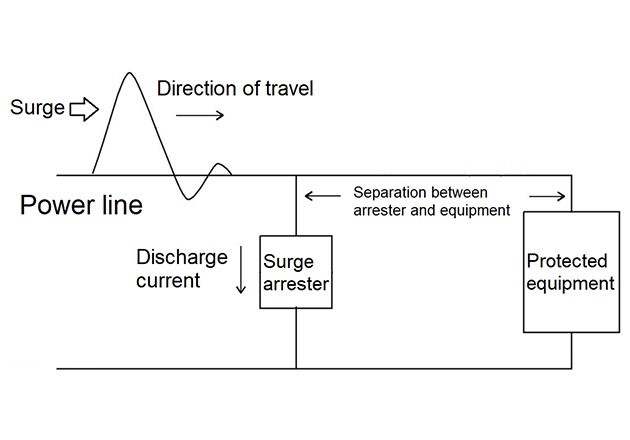Operation principle of the surge arrester
26-08-2021
Insulation costs are very high, so insulating the system and equipment to resist any voltage that would ever appear is not economically viable. It is also impractical to insulate for steady-state voltage and accept all outages originating from surges. It is reasonable to look for a balance between the costs of insulation and protective devices.
Surge arresters are vital to protect the substations against lightning and switching surges. Their surge protective capability determines the power system insulation levels.
The duty of a surge arrester is to avoid exceeding the system and equipment withstand capabilities. Then, whenever a surge tries to exceed the insulation capacity, the arrester will keep the voltage in the acceptable range, protecting expensive electrical devices.
Surge arresters are generally connected in parallel with the protected equipment and are subjected to the system voltage under normal operating conditions. Under steady-state voltage, their impedance is very high. However, it decreases abruptly at higher voltages when a steep wavefront surge comes into the system. The surge arrester diverts the wave’s portion above the arrester breakdown to the ground, away from the downstream protected equipment, as shown in Figure 1.

Figure 1. Operation principle of the surge arrester.
For the surge suppressor to adequately protect the equipment, the voltage that the suppressor sees before and after the surge’s arrival must not overshoot the voltage that the equipment can carry.
In addition to the arrester’s capability to keep the voltage within an acceptable level, a vital factor to consider is its capacity to store or dissipate energy. The diverted current through the arrester and the voltage across it make the device absorb a quantity of energy that depends on the surge’s magnitude and duration. The arrester must store or dissipate this energy without any damage.
Under steady-state conditions, its resistance should be high enough to consume little current and dissipate minimal power.
To summarize, a surge arrester should:
Display a high resistance under steady-state conditions, consuming a small leakage current – if any – and withstand the thermal stress it produces.
Protect against an overvoltage, discharging the surge current immediately and limiting the voltage within a specified upper value – the arrester discharge voltage.
Withstand the thermal energy generated by the surge current through the arrester elements – the arrester discharge current.
Restore the steady-state conditions immediately after the surge voltage and current disappear, and interrupt the follow current.
Possess switching surge discharging capability within specified levels.Be capable of discharging transmission lines